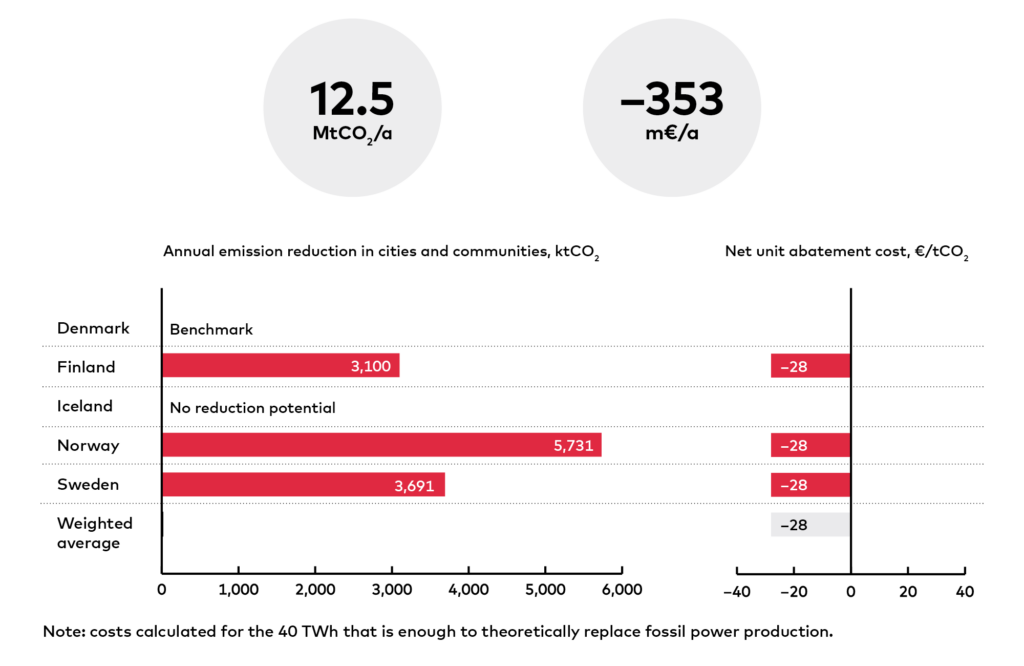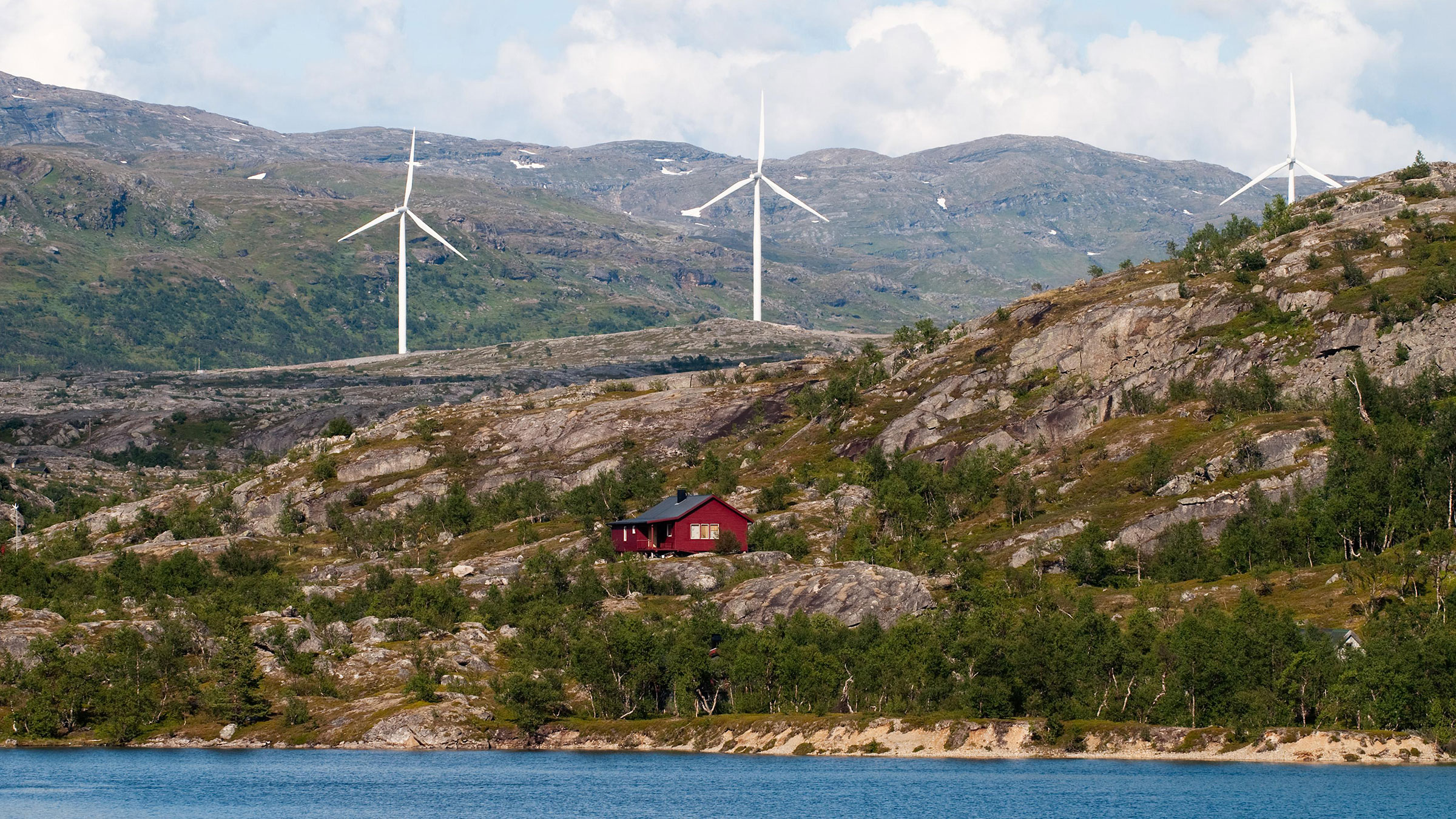Climate impact
Ringkøbing is home to Denmark’s largest onshore wind farm of 22 turbines with a total capacity of 72 MW and an annual electricity production of 230 GWh, enough to meet the needs of 57,000 households – much more than their own.
Many Nordic municipalities have large potential for installing onshore wind capacity. If other Nordic municipalities increased their onshore wind production to match the total level of Denmark and produced 27% of the current electricity demand of their country with onshore wind, wind production would be increased by 73 TWh. However, theoretically only 40 TWh is needed to push out all remaining fossil-based power generation from the joint electricity grid between Finland, Sweden, Norway and Denmark. This would reduce annual emissions by 12.5 MtCO2. (This is a monthly calculation – see the report for more details.)
Costs and savings
The installation cost for onshore wind power is still fairly high, but operational costs are very low. On a levelised cost basis, onshore wind power is already in most cases the cheapest way to produce electricity in the Nordics. We estimate the abatement cost to be negative, –28 €/tCO2, when calculated for the addition of 40 TWh.
Wind power can be a source of property tax and land rental income for the municipality.

Other benefits
Wind power also cuts harmful air pollution from fuel combustion, reduces reliance on fuel imports and can create local jobs. In the Ringkøbing case, the wind turbines were produced at a local factory and installed by local operators. A local operator also holds the 20-year service agreement.
Barriers
- Wind power projects often face resistance by some of the local people.
- Lengthy and rigid permit-granting processes can also act as a significant barrier.
- The existing power grids limit the placement of wind parks, as too great a distance to the existing transmission grid can make the connection too expensive.
- Disturbance to radar equipment can severely limit the placement of wind parks.
- If a wind power project does not receive any state subsidies, a long-term power purchase agreement (PPA) is usually required for the project investment to get long-term financing.
- Wind requires flexibility from the rest of the energy system in the form of transmission capacity, demand response, storage, increased peak backup power or interconnections with neighbouring countries.
Enablers
- The main drivers for wind power have traditionally been subsidies. Currently, the dominant support scheme for onshore wind is an auctioned price premium paid on top of the wholesale market price for electricity.
- PPAs have recently allowed many onshore wind projects to be carried out completely without subsidies. Wind PPAs protect the buyer from the electricity market price volatility and can enhance sustainable brand image.
- Development of technology enables the harnessing of weaker winds, and the placement of wind farms can be done more and more freely.
- Local public acceptance is necessary. To drive this, Denmark has promoted co-operatives that enable locals to buy shares in the wind farms.
- Streamlined and standardised application processes that allow for technological advances during the permitting process. In Denmark, wind projects also receive support during the pre-investment phase.
- Energy system with a lot of flexibility will allow for high shares of wind power. In Denmark, this is achieved through the placement of wind farms in different regions, high flexibility by the country’s power and CHP plants and strong interconnections with neighbouring countries.































RELATED SOLUTIONS